Billnäs Ironworks Village is becoming Finland’s hanami paradise – walk there along Åvallen route from the beautiful Pumpviken Park
In a commercial collaboration with Visit Raseborg
Hanami is a Japanese cherry blossom festival celebrated when the cherry trees burst into a stunning pink bloom. Billnäs itself, a picturesque ironworks village in Raseborg (Raasepori), approximately an hour’s drive from Helsinki, is reportedly home to the largest concentration of cherry trees in Finland. In a few years, when its young trees grow larger, the entire village will undoubtedly turn light pink. Whether you’re going for hanami or not, it’s worth starting your walk from the beautiful Pumpviken Park in Karis (Karjaa), where you can follow Åvallen (Jokivalli) route for a total of just over five kilometers.
Pumpviken (Pumppulahti) in Karis is an oasis-like area nestled in a bend of the Svartå river (Mustionjoki), featuring a picturesque park created for the enjoyment of locals and visitors. The destination is easily accessible, as Karis can be reached directly by train from Helsinki and Turku. Visitors to the Raseborg area may also consider using city bikes if they want to explore the region on a longer trip or if they simply prefer cycling over walking.
From Pumpviken, a route called Åvallen leads to Billnäs Ironworks Village, and on the Billnäs side, the circuit is completed by the Culture Path route. Culture Path is a cherry blossom loop at the end of Åvallen, while Åvallen itself is a linear trail.
I visited the area twice in the first half of May, one week apart, and witnessed the explosion of spring between my visits. This article includes photos from both visits. On the first visit, there was only a hint of green, but a week later, the park had already transformed into a lush setting for summer. Cherry trees bloomed and competed for attention with wood anemones and tulips. The grass had turned green in the warmth of the sun, and even the fountain had found its place in the river’s water. A pair of Canadian geese and mallards swam in the river like ornaments, and people relaxed on the park’s lawn, benches, and sun loungers scattered here and there. Everyone greeted each other with smiles and friendliness.
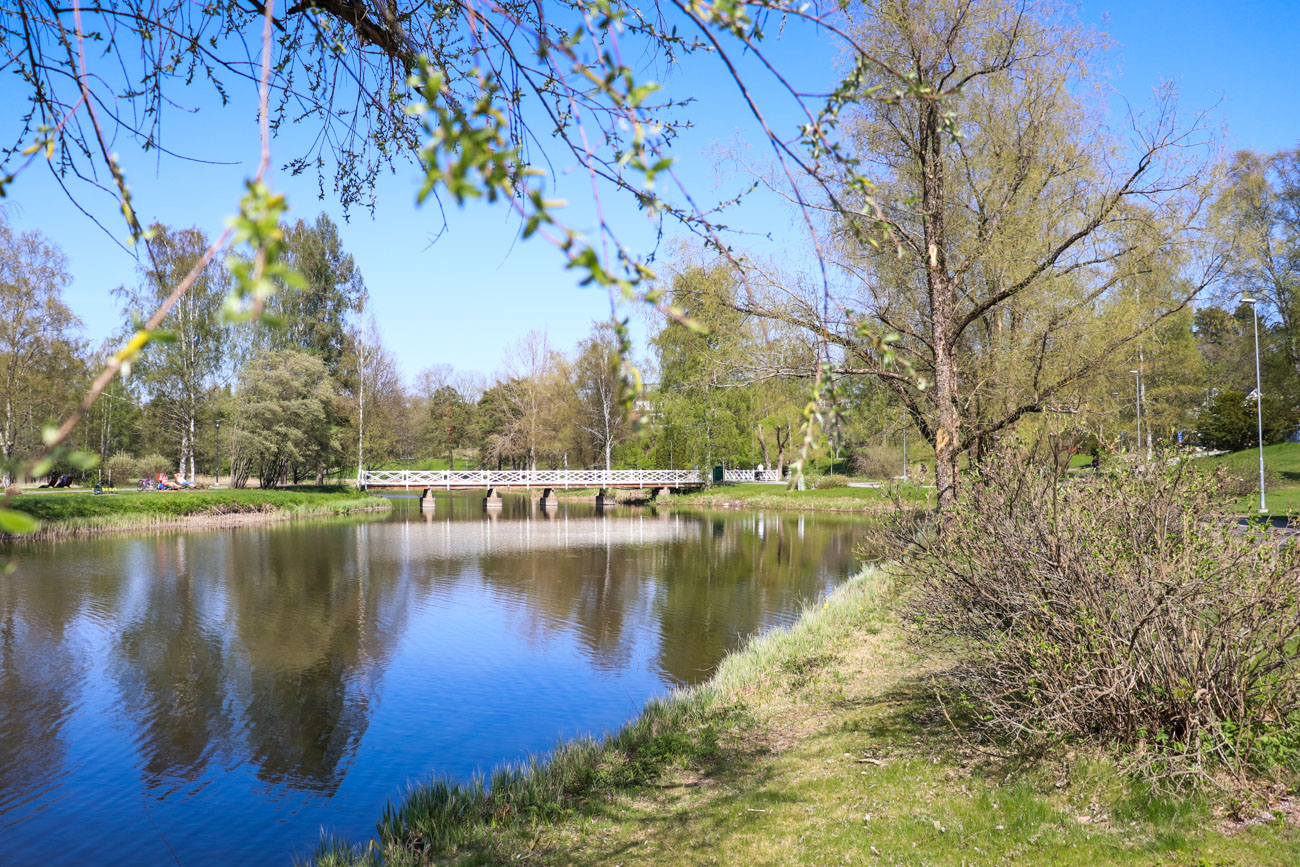
In the middle of Pumpviken park, there is an island beckoning visitors to walk across a wooden bridge. You can take a short walk on the island or spend some time there. The bridge and paths are accessible.
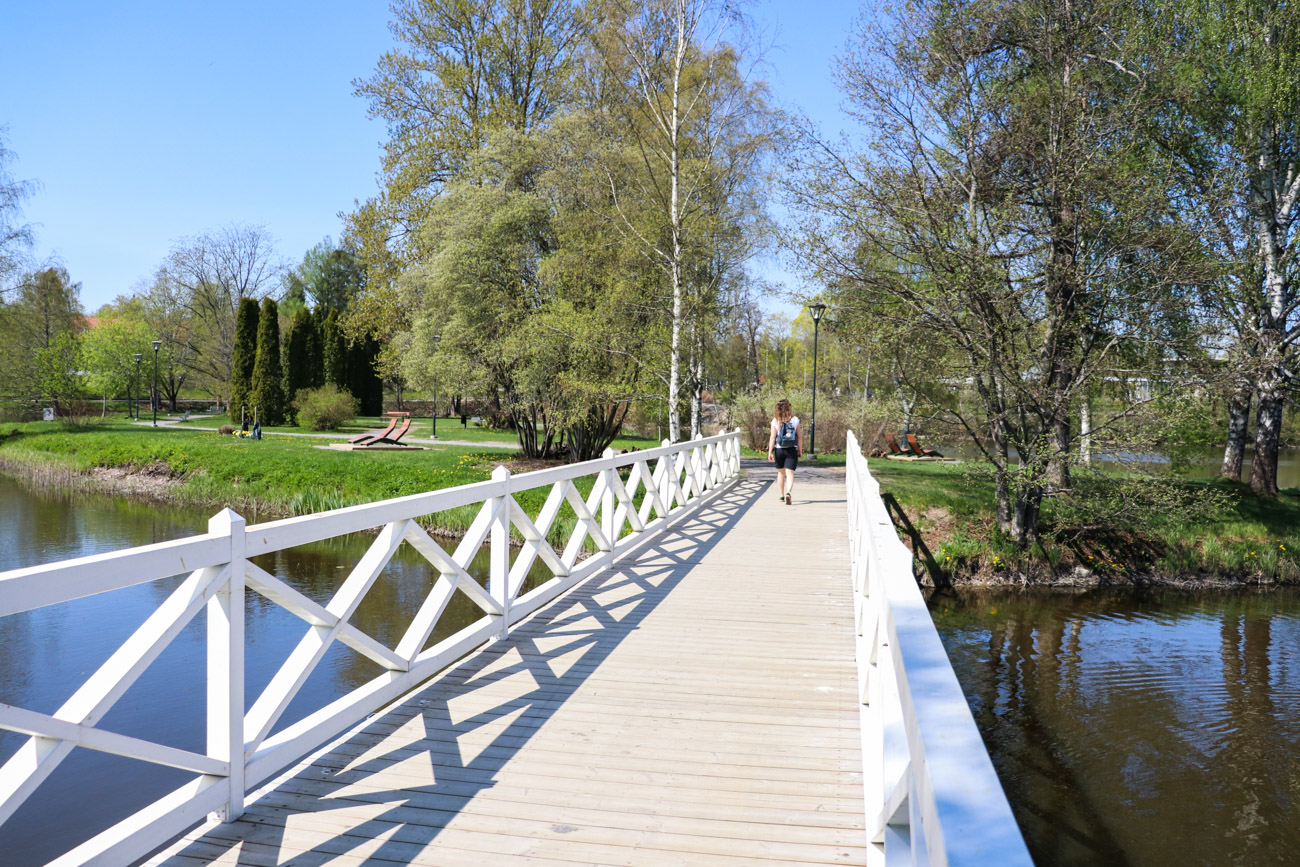
Before Pumpviken park became a beautiful recreational and relaxation area, it was an important thoroughfare, as well as a fishing and hunting spot for the local population. Pumpviken has been a central destination for people in the area for thousands of years.
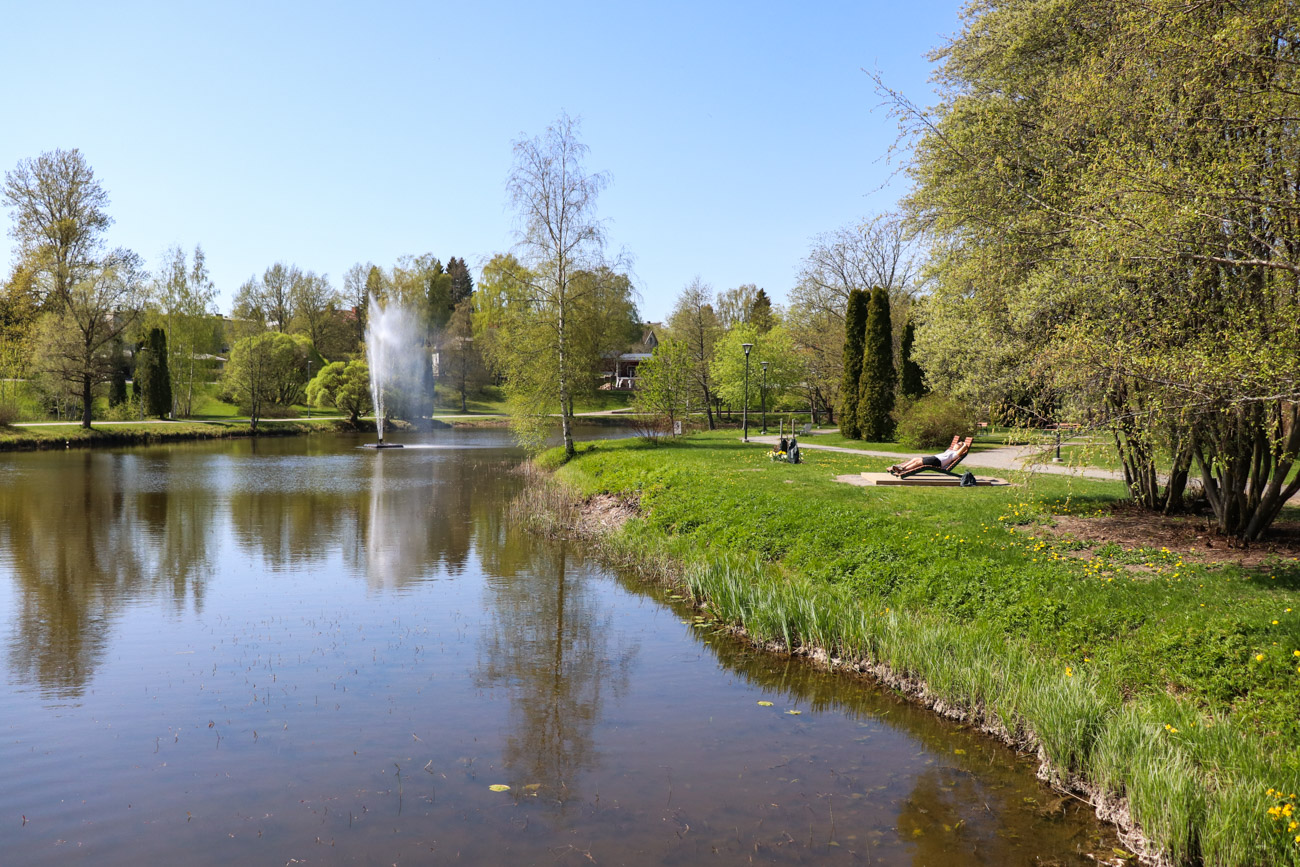
On the shore, you can see a small sandy beach-like strip, and many beautiful individual trees catch your attention. Had there been an ice cream kiosk in sight, I would have definitely indulged in a scoop of oat ice cream and joined the people enjoying the park, sitting on one of the numerous benches while savoring the beauty of the park with a refreshing ice cream. Since there was no ice cream in sight, I contented myself with watching my colleague Karoliina doing some workout with a giant willow tree.
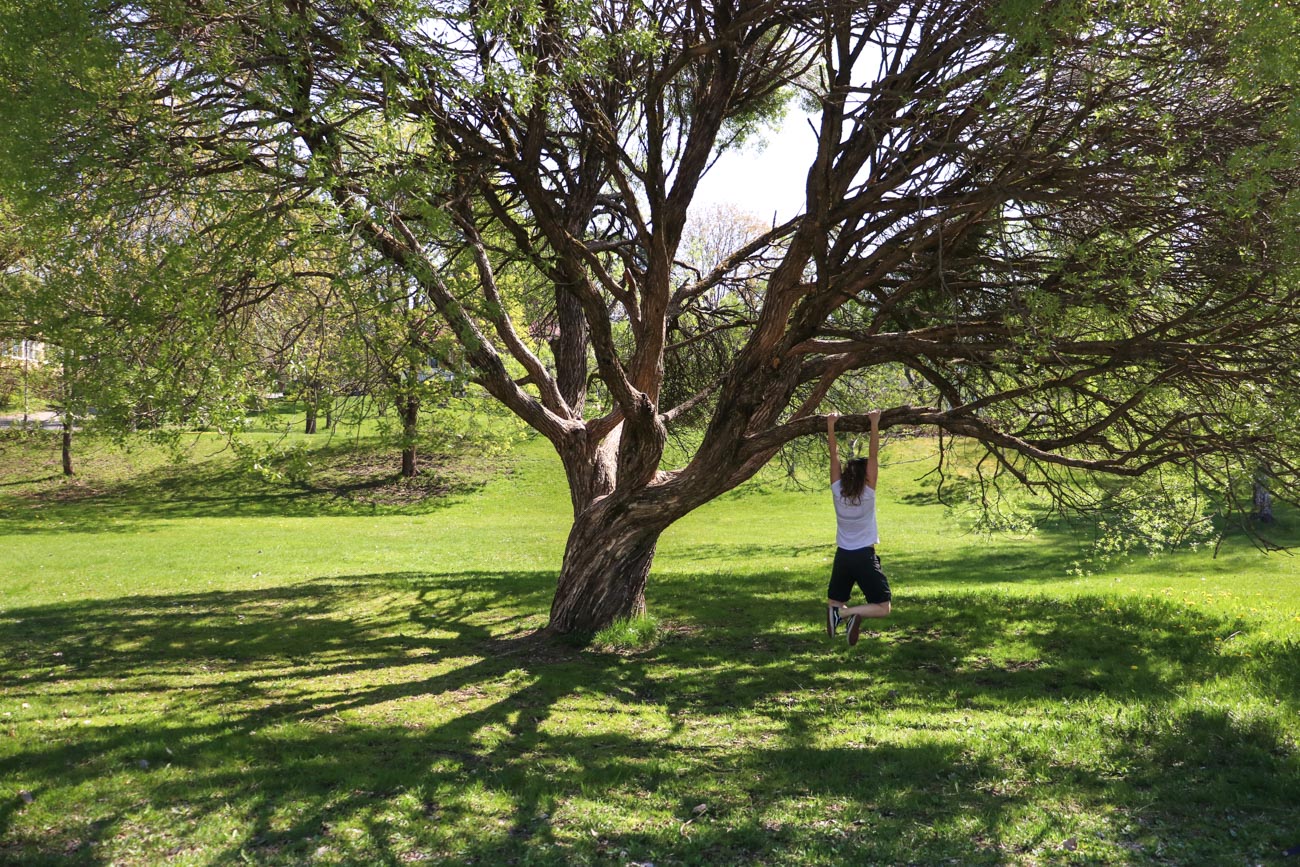
In the Pumpviken area and its surroundings, there are a few information boards showcasing the history of the area. One of them can also be found near the wooden bridge, called Grabbe’s Canal. The canal used to be a connection between the Svartå river and the famous Läppträsk Lake (Lepinjärvi) known for its birds. Although the canal’s glory days are long gone, it may have been an important waterway for medieval navigation.
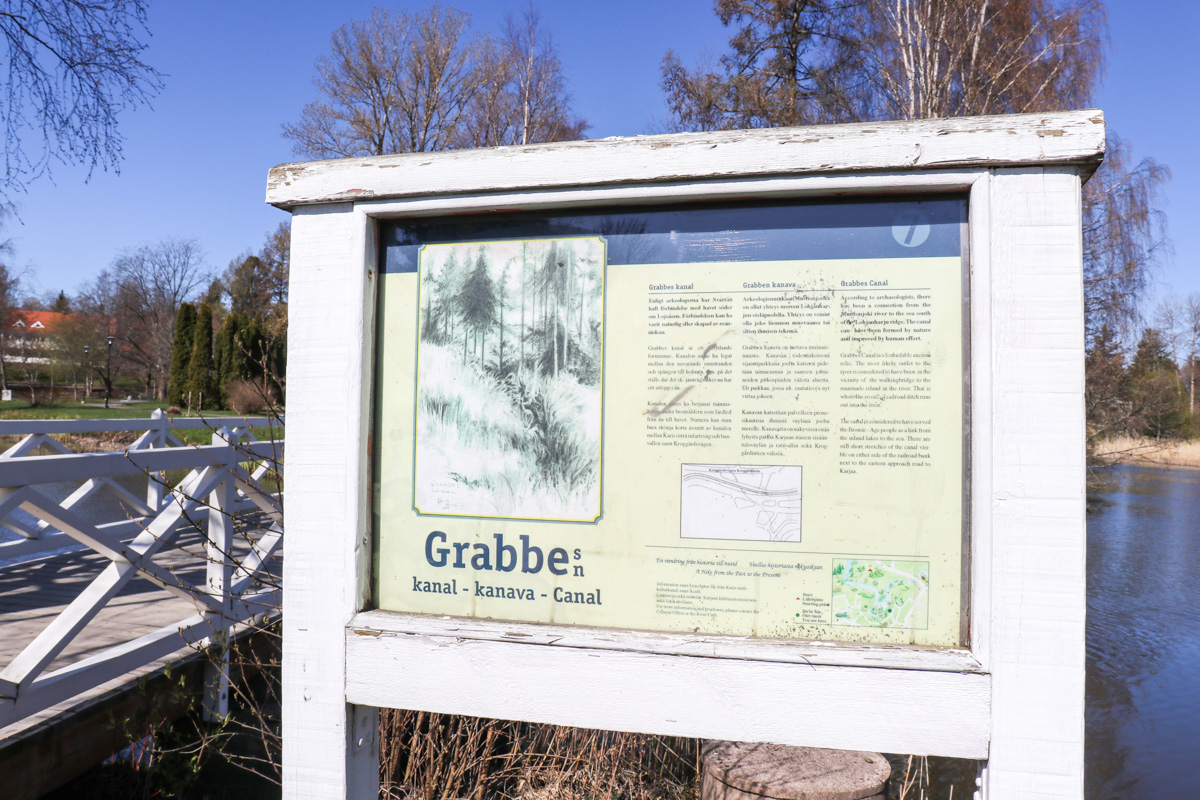
As the route curves to the other side of the bay, a small and charming brick building comes into view, unfortunately defaced by vandals. The building has an interesting history and has given its name to the entire park: Pumpputalo (“the pump house“), which used to provide water for steam locomotives in the 1800s.
Continuing our journey towards Billnäs, a small distance is filled with history. A beautiful red wooden building catches our attention, along with a suspension bridge next to it. The building is Antkärr’s House, currently known as the Karis Museum and Home Association. It was built in the late 1700s on Ekerö and was relocated to its current location in the 1990s.
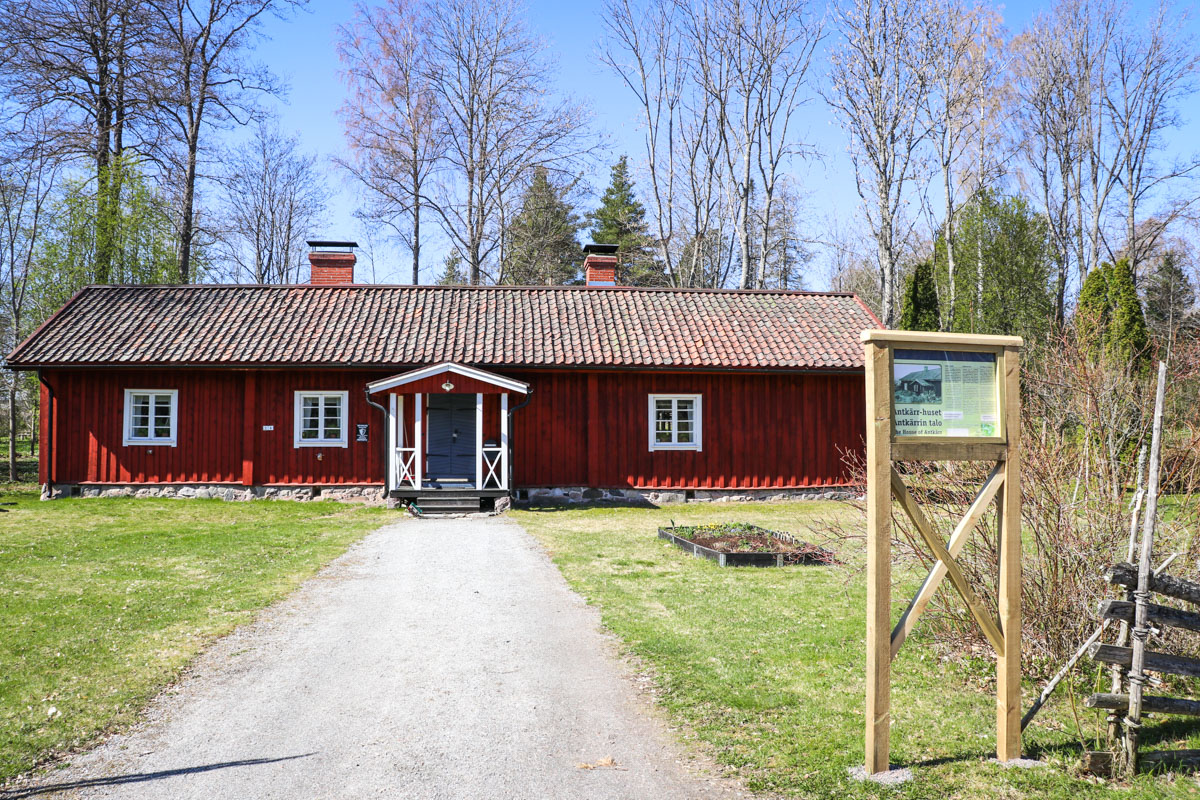
From the suspension bridge in front of the house, there are nice views of the river in both directions. For those who enjoy activities, it’s worth crossing the bridge and exploring the opportunities on the other side, such as a frisbee golf course, a tennis court, and a rentable riverside sauna with accompanying facilities. However, if heading towards Billnäs, it’s not advisable to cross the bridge without returning, as Åvallen continues on the same side as the beginning, towards the ironworks village.

In front of Antkärr’s House, there are also signs indicating that there is still a 2-kilometer distance to Billnäs along Åvallen.
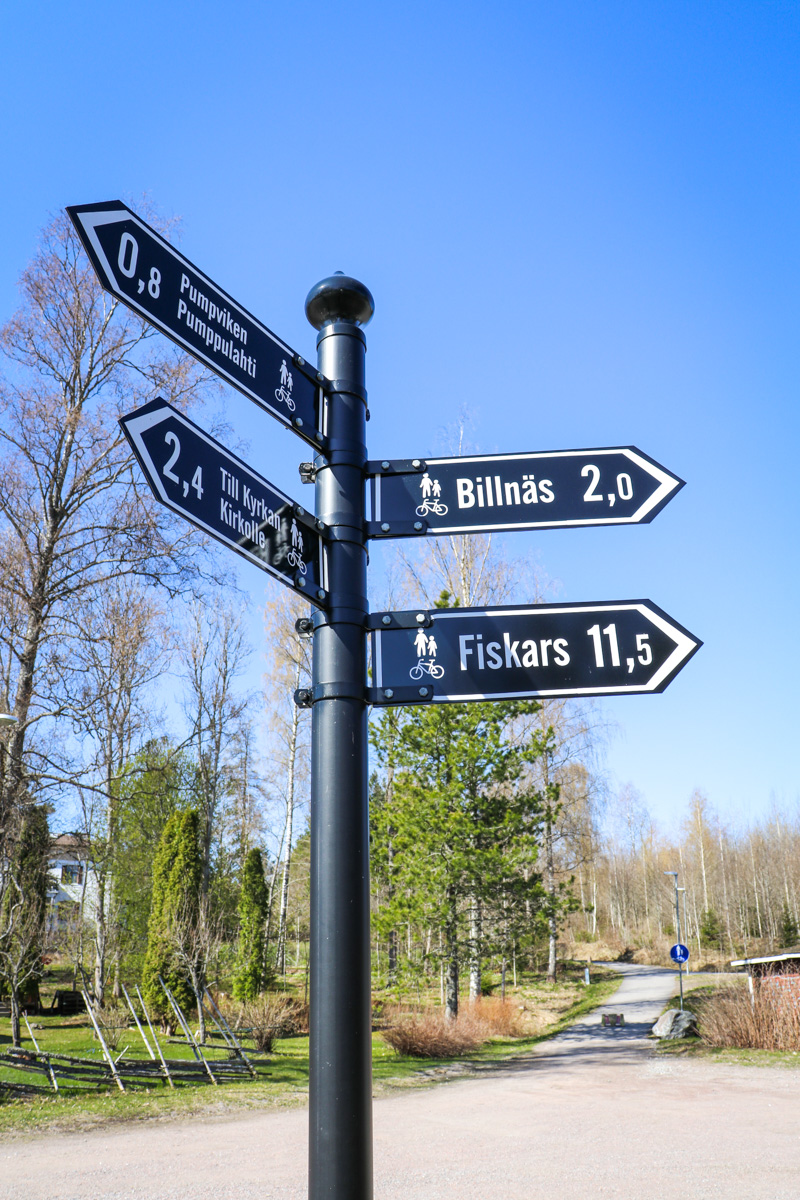
The journey along Åvallen proceeds between the river and its shoreline forest, passing various meadows, buildings, and a peaceful residential area. We admire blooming bird cherry trees, white wood anemones on the riverbank, and the occasional blooming wild marsh marigolds. May is an incredibly beautiful time in Southern Finland! Along the way, there are also places to sit and rest, and upon reaching Billnäs, the route is adorned with beautiful information boards showcasing its secrets.

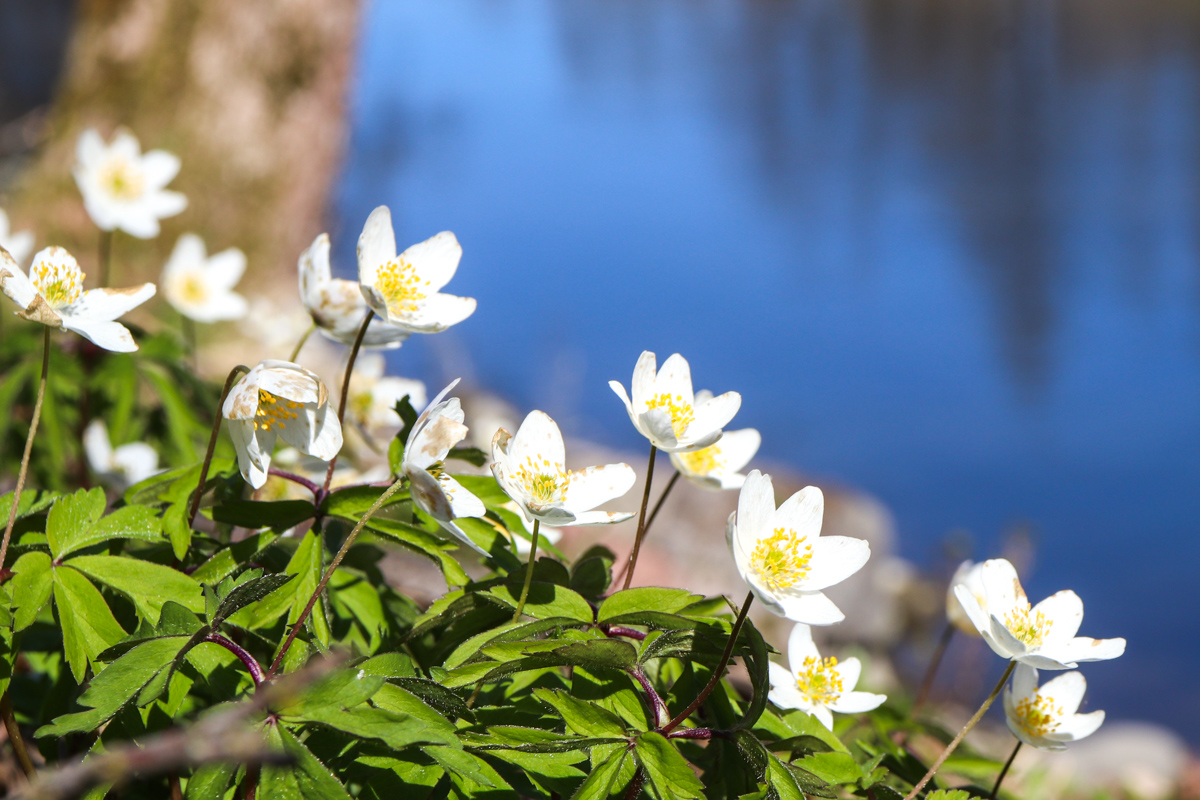
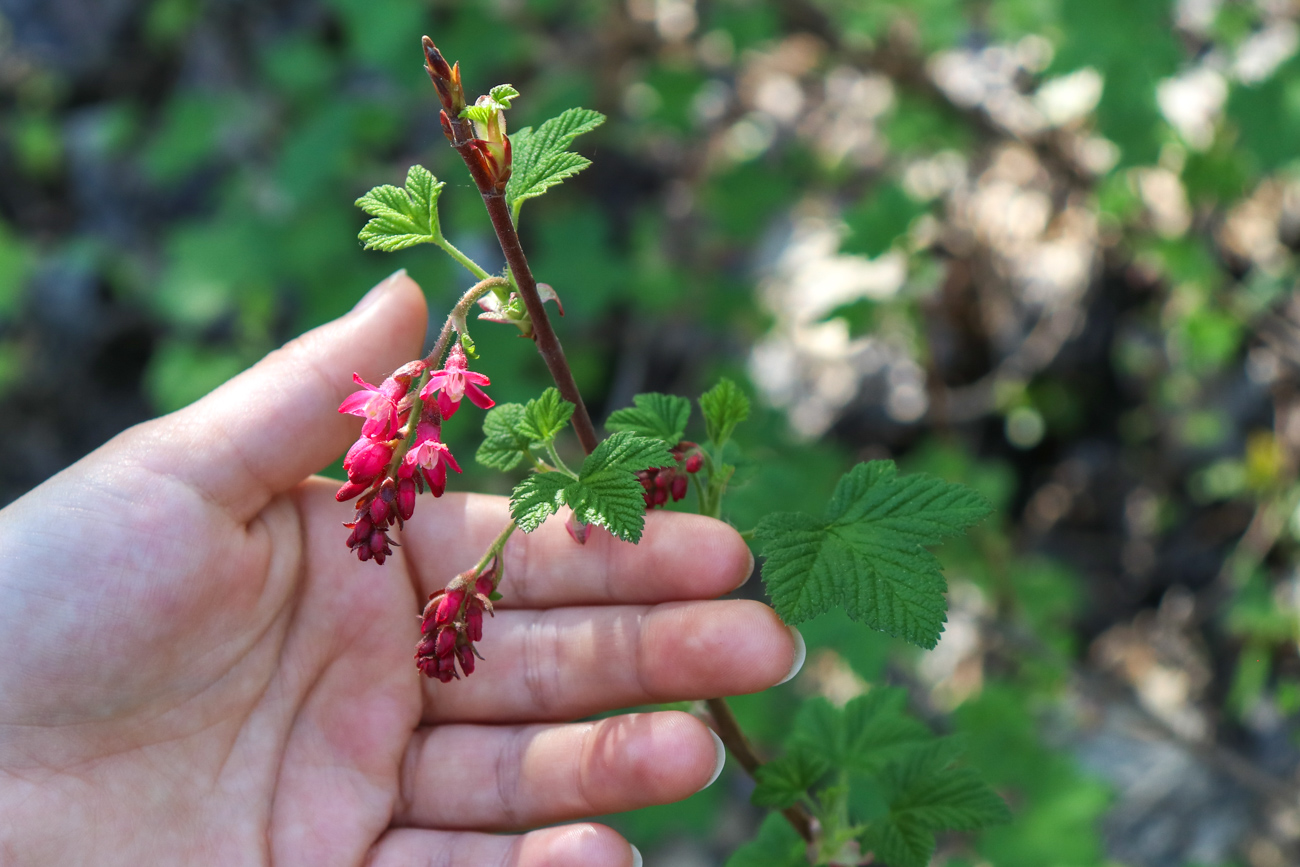
Upon arriving in Billnäs, a decision must be made whether to proceed clockwise or counterclockwise along the Culture Path route. To the right, over the river, or to the left towards the village center?
In Billnäs, the river can be crossed at three points: firstly, via the pedestrian bridge from the direction of Pumpviken, secondly, through the narrow pedestrian path near the fish ladder and dam, or thirdly, by taking the farthest road alongside Billnäs Puistotie bridge. The map of Culture Path numbers the destinations clockwise (see area map), and we decide to follow that. So, towards the village center!
We spot the first pink cherry trees right from the edge of the pedestrian bridge and, of course, we have to stop to admire and take photos.
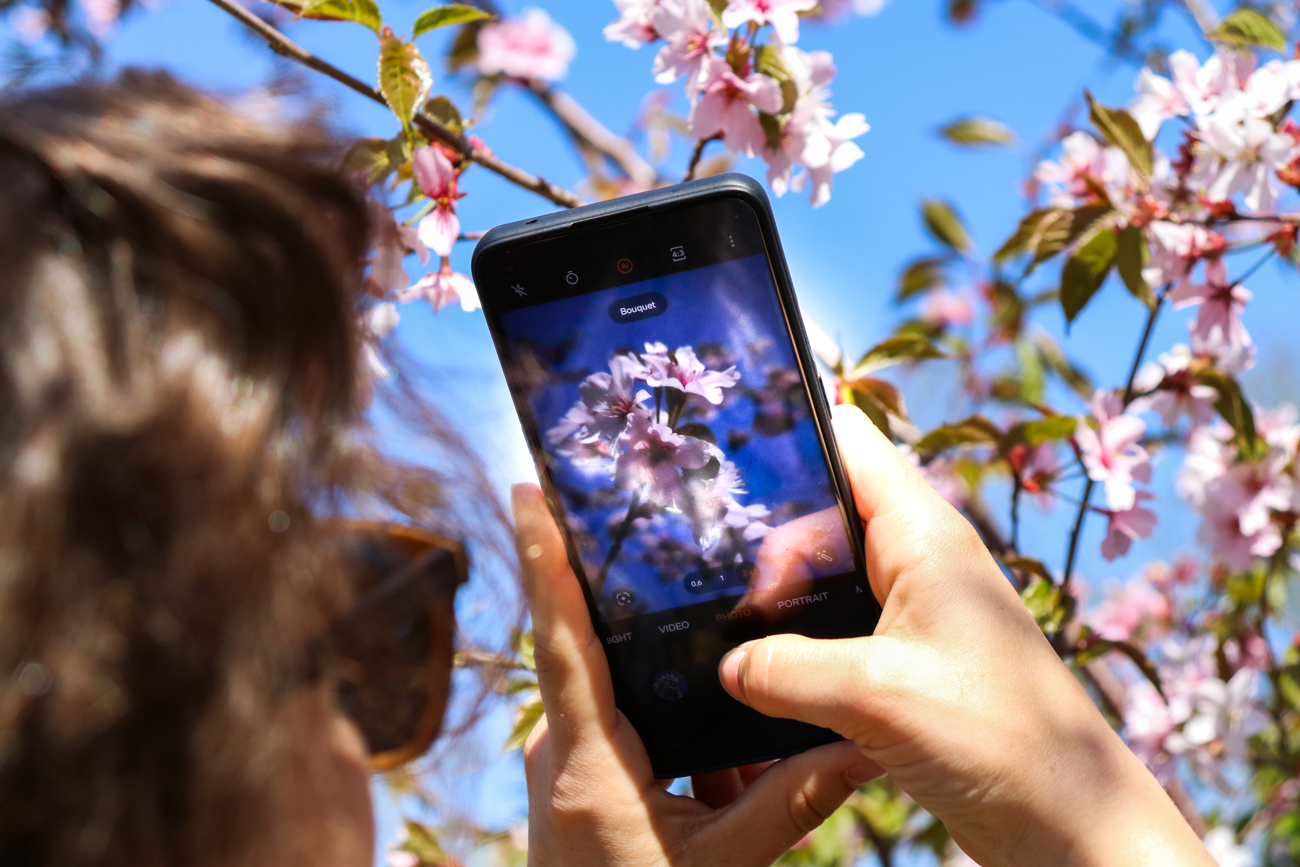
Not all cherry trees in the area are the same variety, and the location certainly affects the blooming to some extent. Some trees are still in full bloom, while others have likely already bloomed just a couple of days earlier. The gentle breeze delicately detaches petals, creating a confetti-like shower of pink and white in the air. Against the blue sky, the branches of cherry trees and the yellow-green maple trees create stunning color combinations.
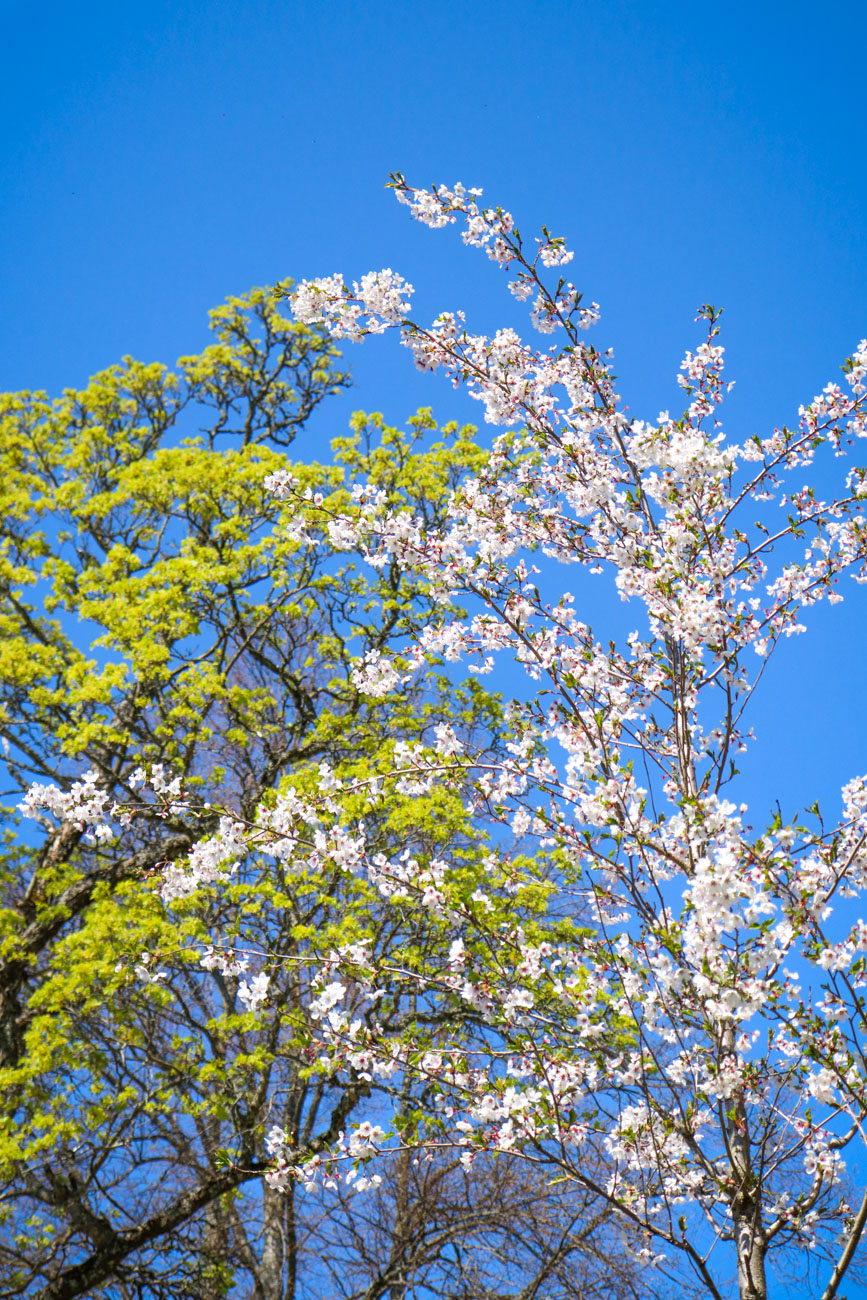
In the center of Billnäs, we spontaneously stop for lunch and a drink at Billnäsin Ruukki restaurant and take a quick visit to the chocolate factory store. The cherry tree in the middle of the village, larger than many others, has already blossomed – a week earlier, it wasn’t in bloom yet. Seeing the Hanami in its fullest floral splendor requires good timing and a stroke of luck!
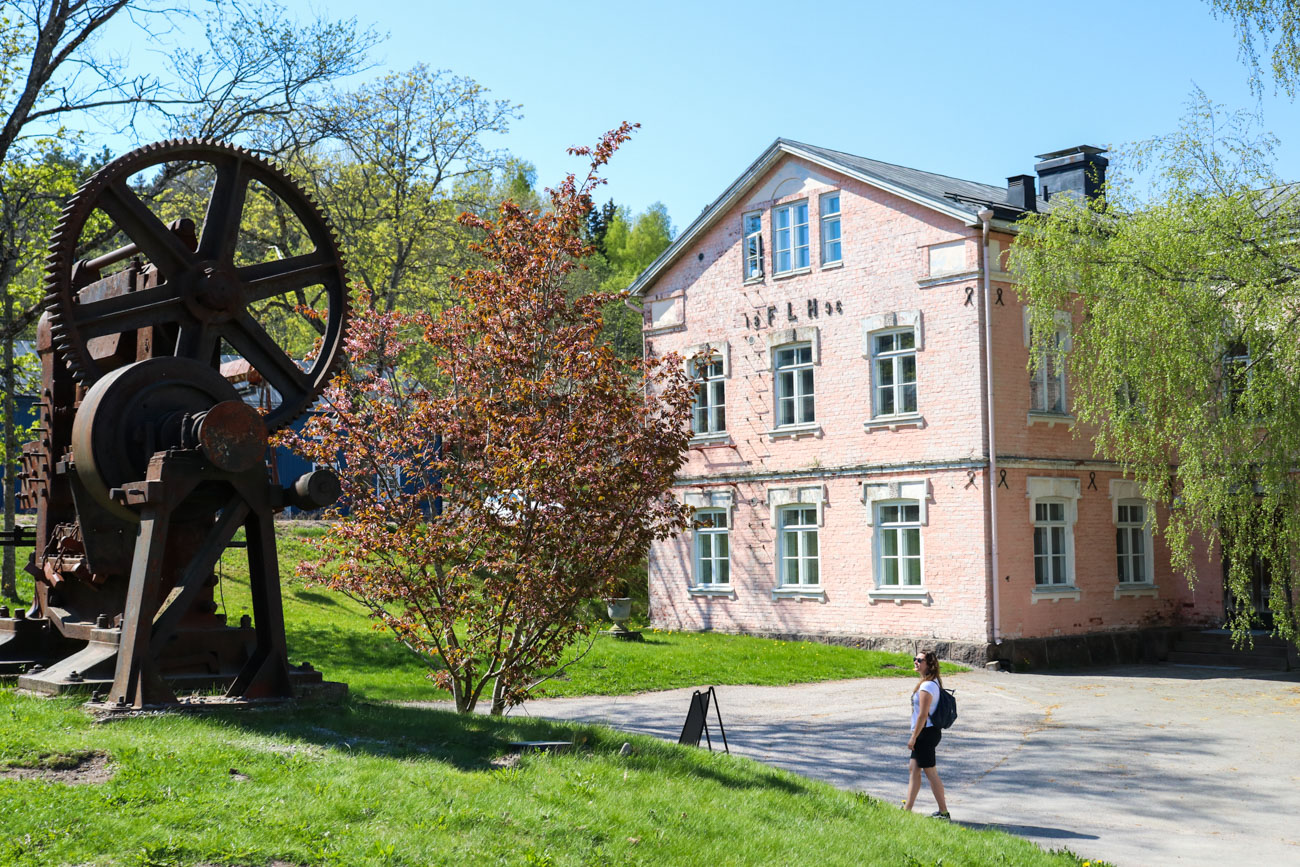
On this beautiful Monday afternoon, there is no crowd to speak of. We only see occasional passersby. However, I can imagine that during summer weekends, there will be plenty of people. By starting from Pumpviken park, you can comfortably and peacefully walk along Åvallen without the need to drive directly to Billnäs. For those arriving by train, there are of course no parking concerns even during peak times, making it a convenient and recommended option. It takes about half an hour to walk from the Karis train station to Billnäs and only 15 minutes from railway station to Pumpviken.
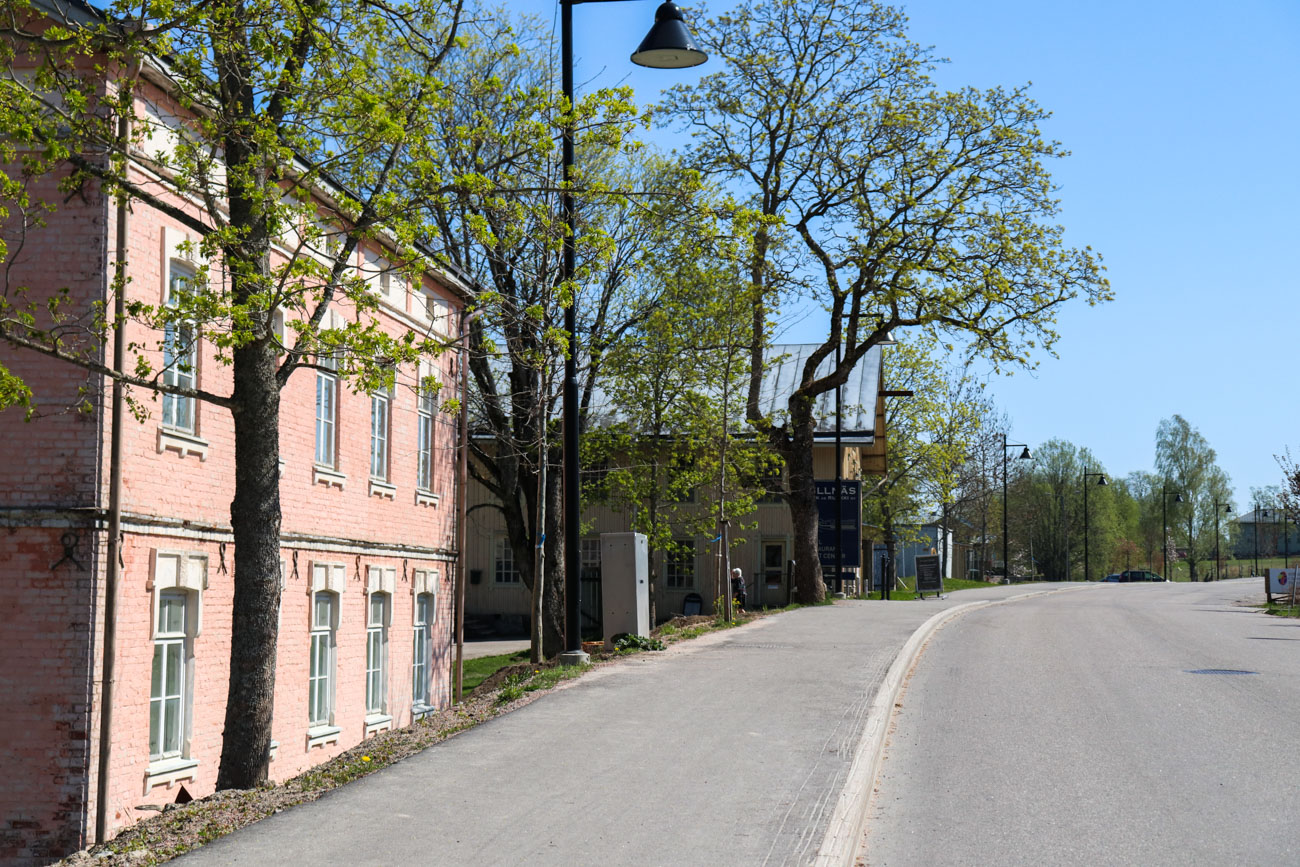
Although cherry trees grow in many places, their beauty is best appreciated in destinations like Billnäs, which would still be charming even without the cherry trees, with its old and beautiful buildings and the atmosphere of the old ironworks village. I can’t wait for the time when these still relatively small trees have grown to larger dimensions, potentially making Billnäs the most beautiful ironworks village in the country, unbelievably stunning during Hanami!
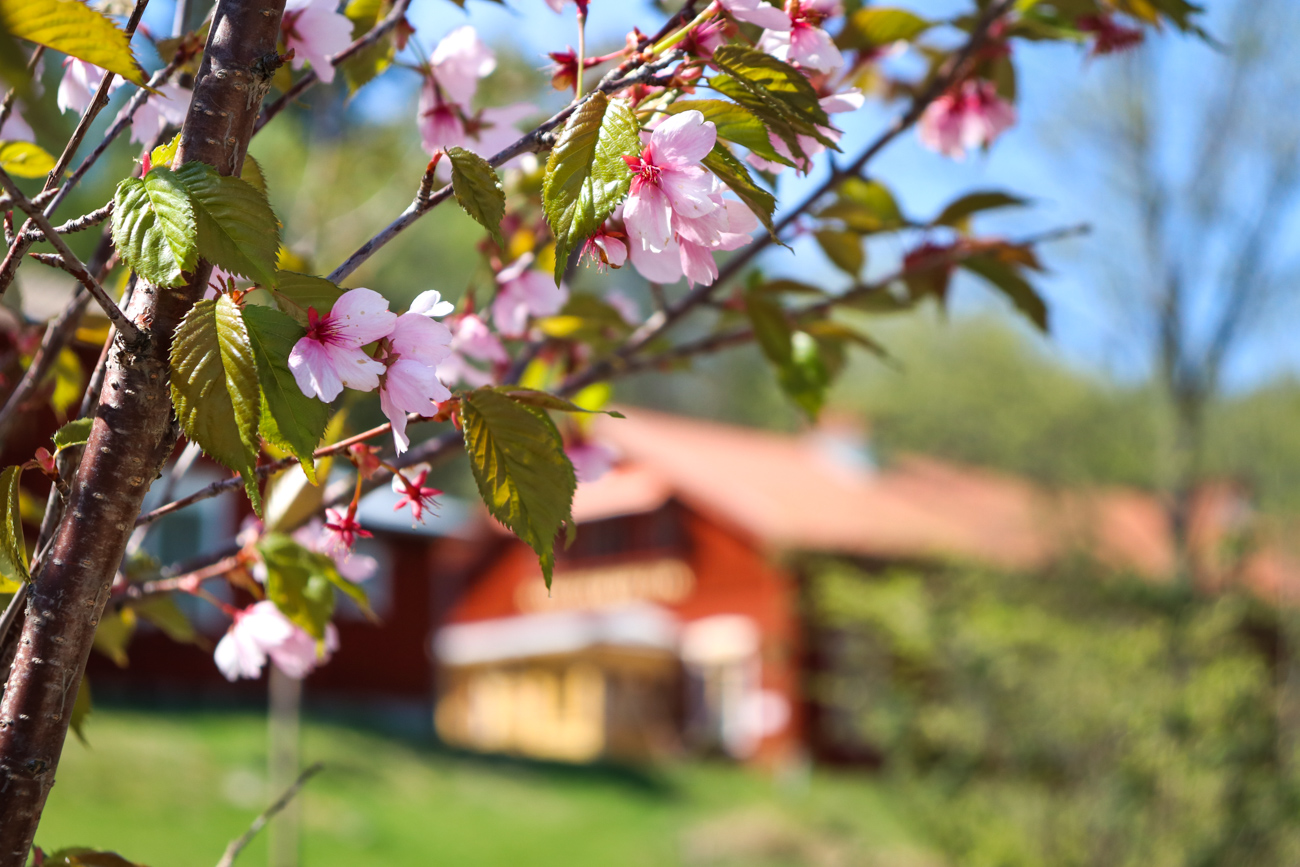
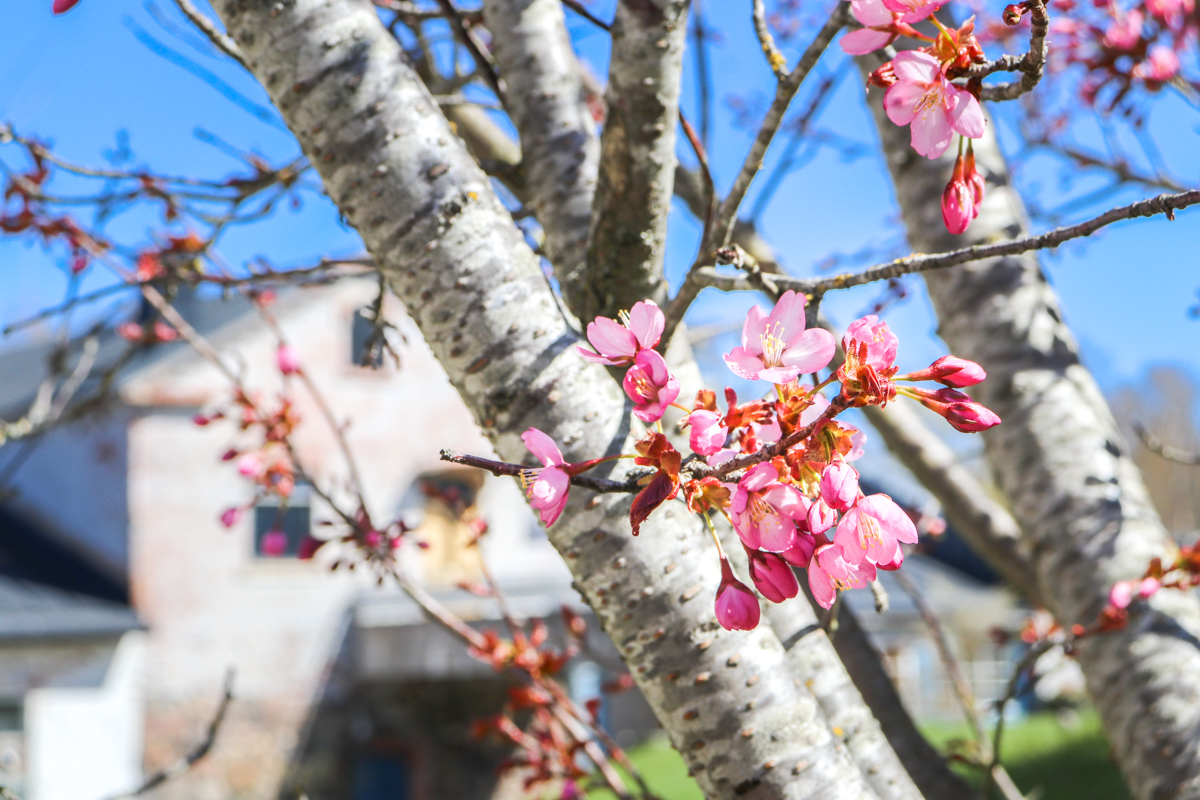
Billnäs is one of the iconic ironworks villages in Raseborg, which together form one of our country’s official national landscapes. Other ironworks villages in Raseborg include the famous Fiskars, the small and charming Antskog, and the magnificent Mustio with its manor houses and parks. The area between and around the ironworks villages offers cycling routes, and there is even an official kayaking route from Mustio to Billnäs.
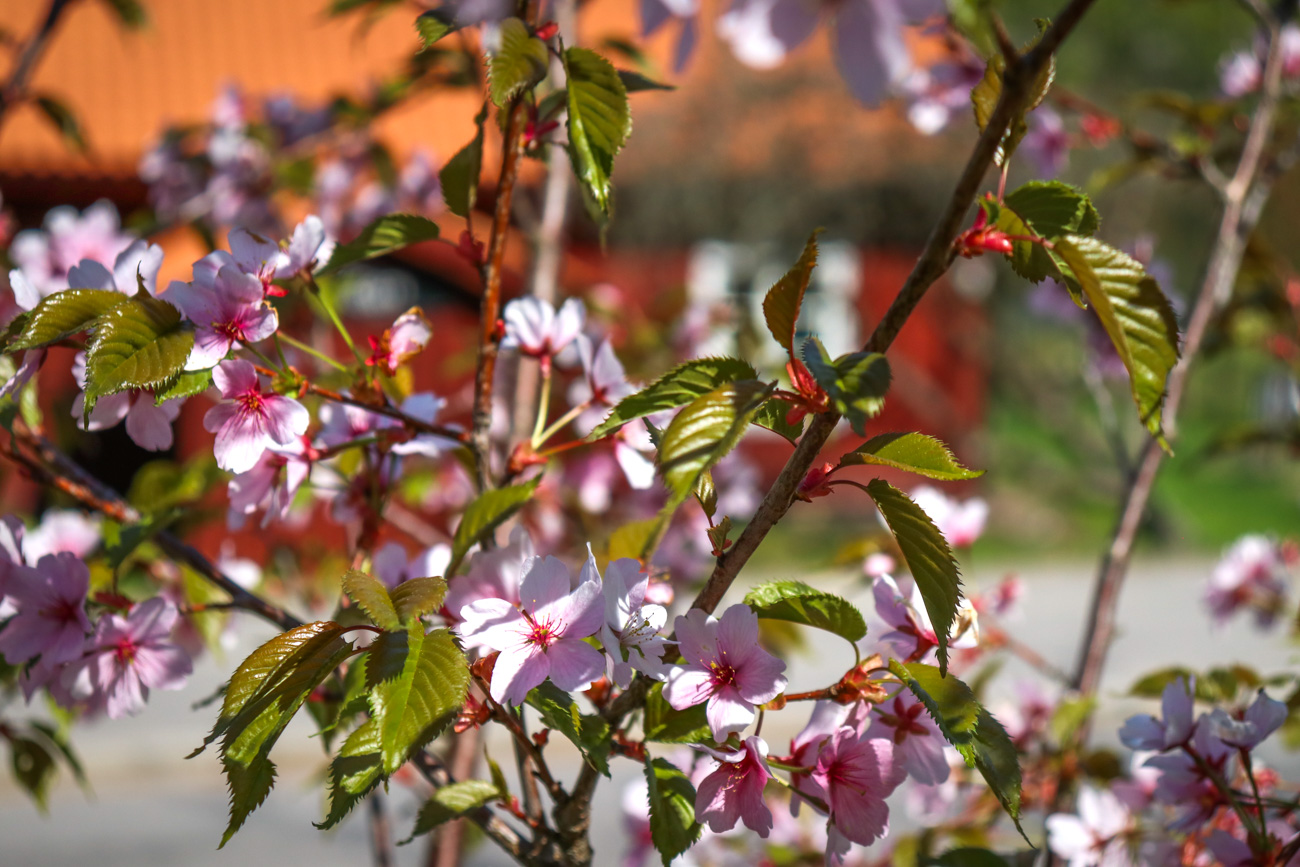
In the springtime Billnäs cherry blossoms compete with the beauty of the old and well-maintained buildings. The architecture is beautiful on both sides of the river. We walk along Ruukintie road, following the downstream direction of the river, allowing our eyes and minds to rest in peace amidst the beauty of spring. A garage sale in one of the houses’ yard stops us to explore its treasures, and shortly after, we arrive at a bridge where we cross the river.
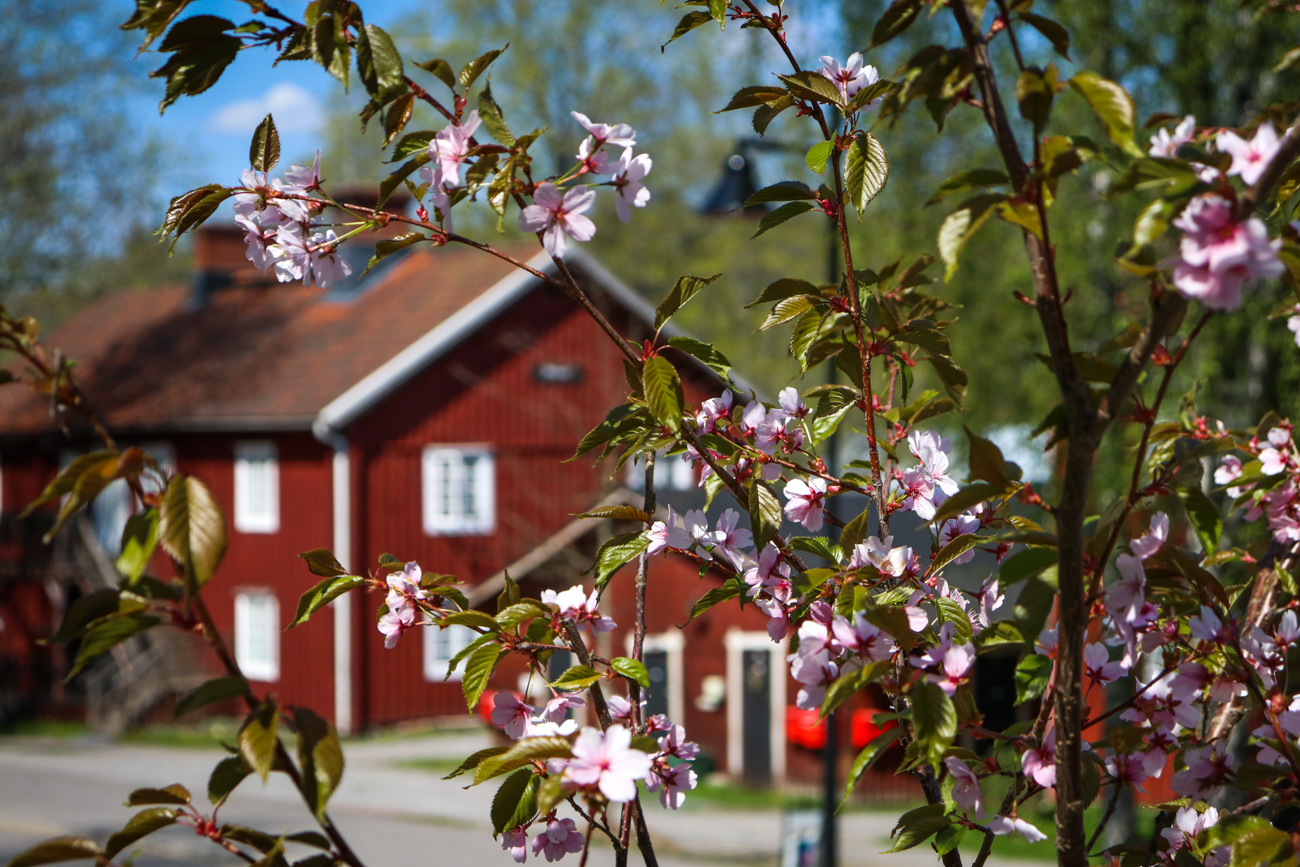
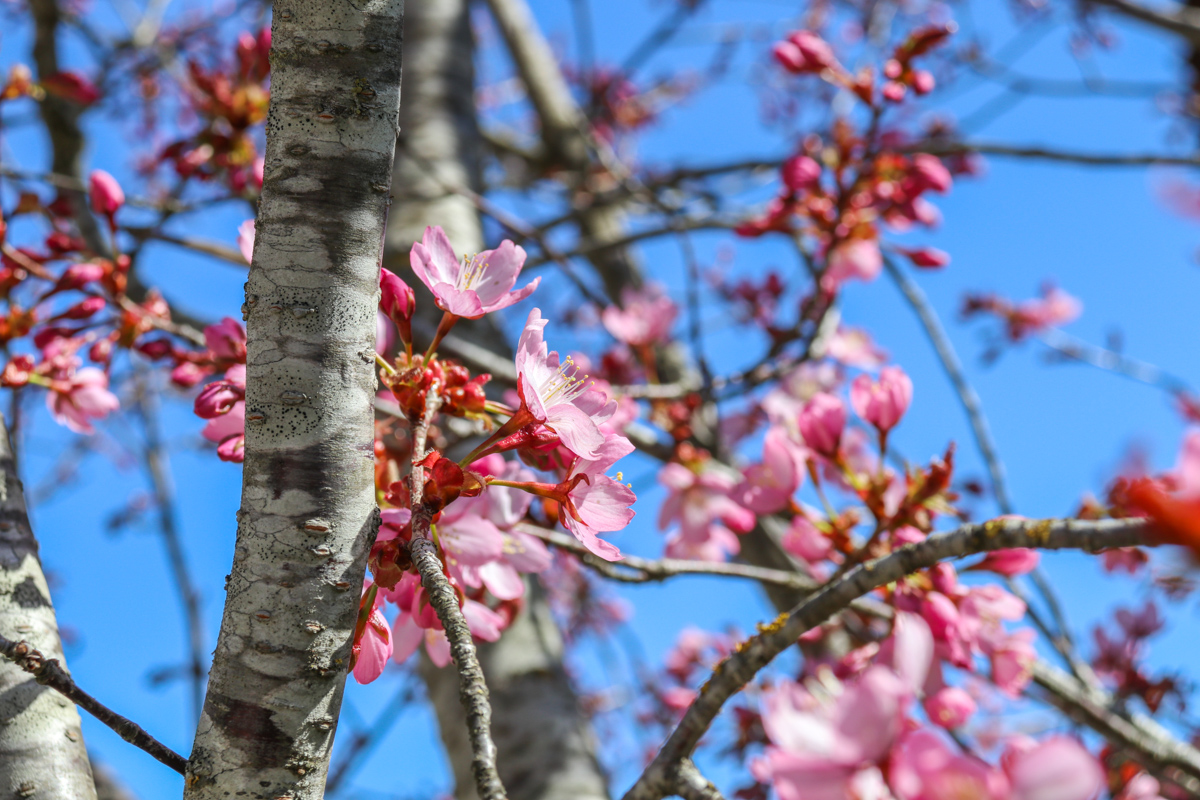
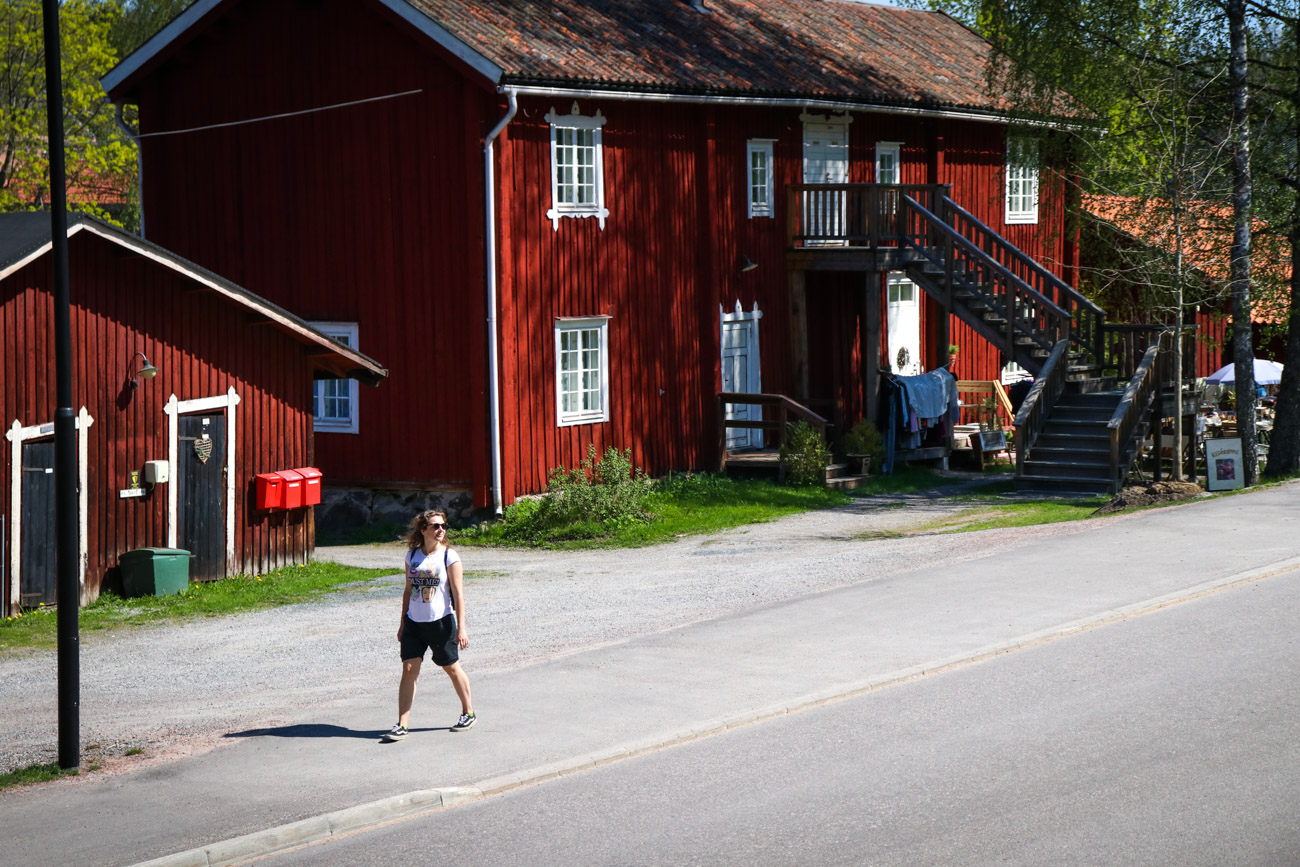
Below is a picture from the Billnäs Puistotie bridge, looking towards the power plant dam and fish ladder.
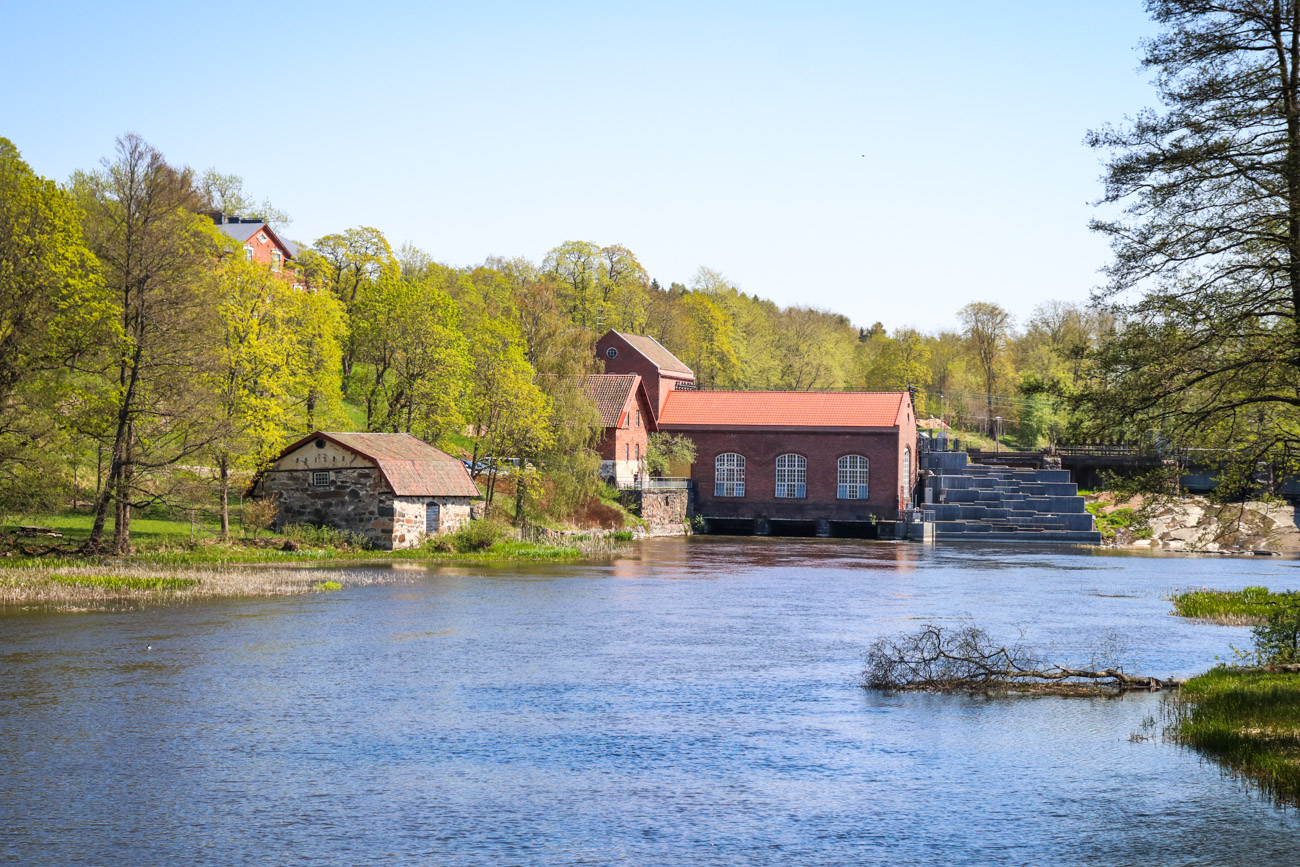
After the bridge we turn right and at the same time our journey back to the starting point begins, although there is still half of the Culture Path tour left. The old buildings of the ironworks spread on both sides of Vasarasepäntie road. Occasionally, a passing car or cyclist zooms by.
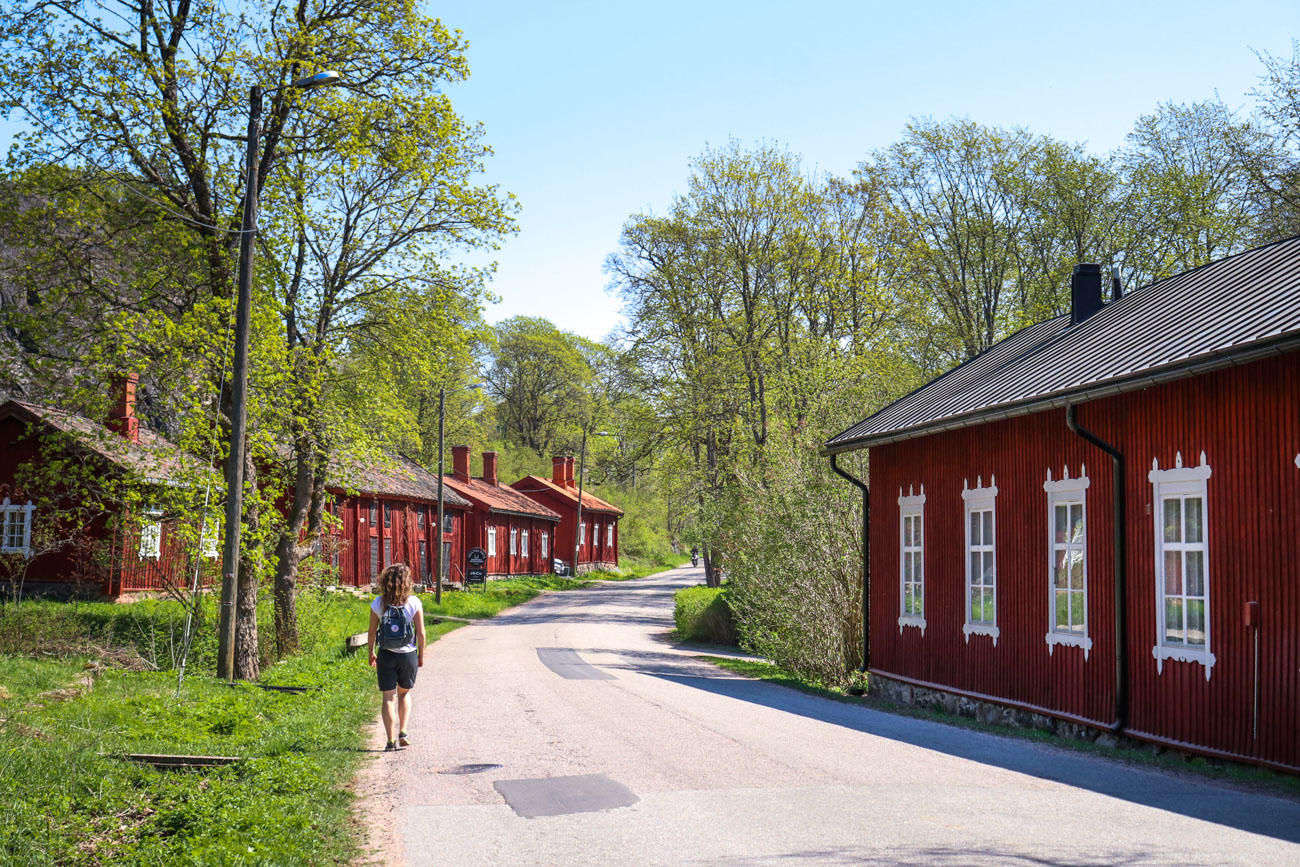
From Vasarasepäntie road, we head down to the riverbank and find more cherry trees. From here, there is also a great view, perhaps the most picturesque in the whole ironworks village, of the red row of buildings and the cliffs behind them. An orange tip butterfly flutters past us, adding the finishing touch to the beauty of the scenery. Everything is so charming!
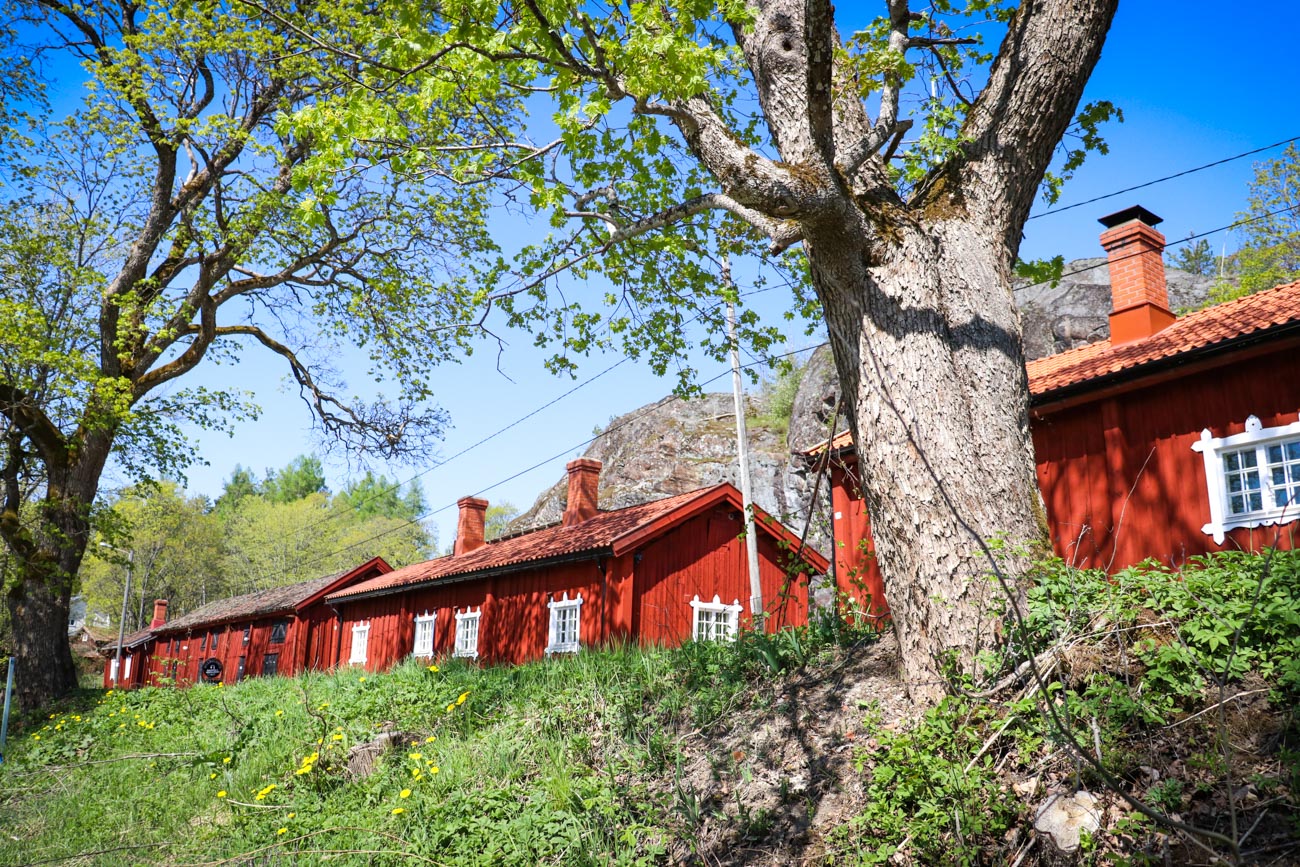
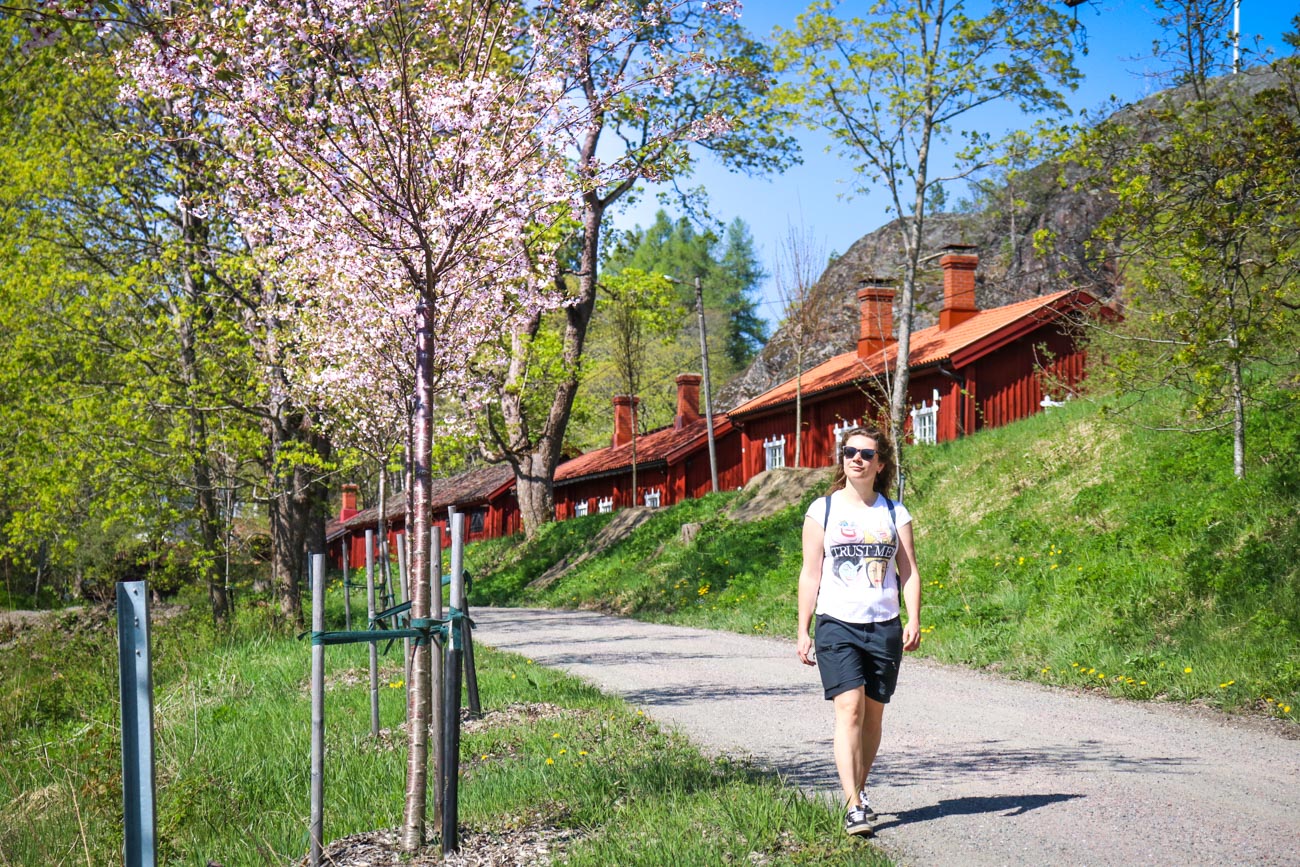

The highlight of the Culture Path is access to the dam and the fish ladder. The gate provides instructions and guidance for safe movement and following them the visitor is welcome to walk on the dam. We peek down into the fish ladder, where the water ripples and curves, although this time we don’t spot any fish. The fish ladder has been a long-awaited and significant project in Raseborg. From this page you can see photos of the magnificent fish that can once again ascend the river thanks to the fish ladder.
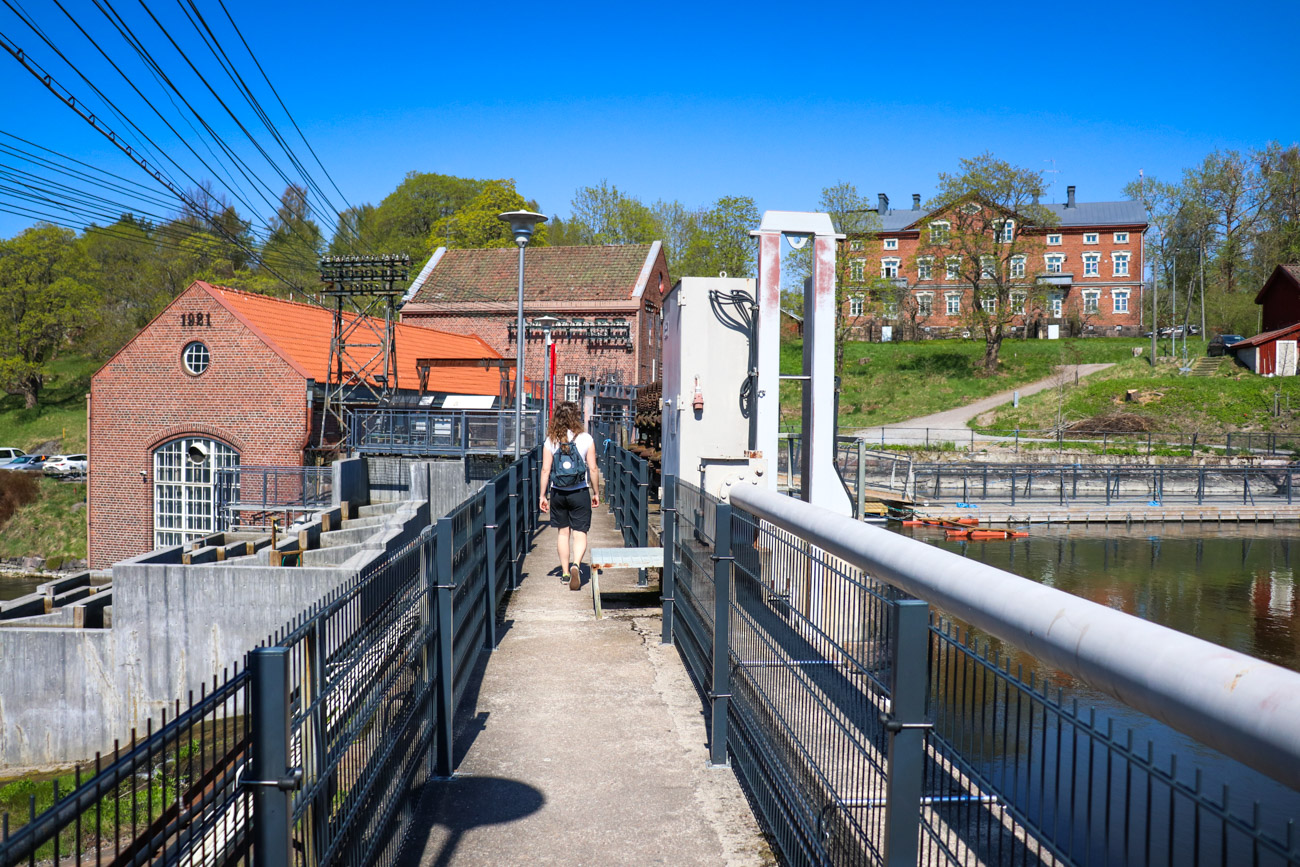
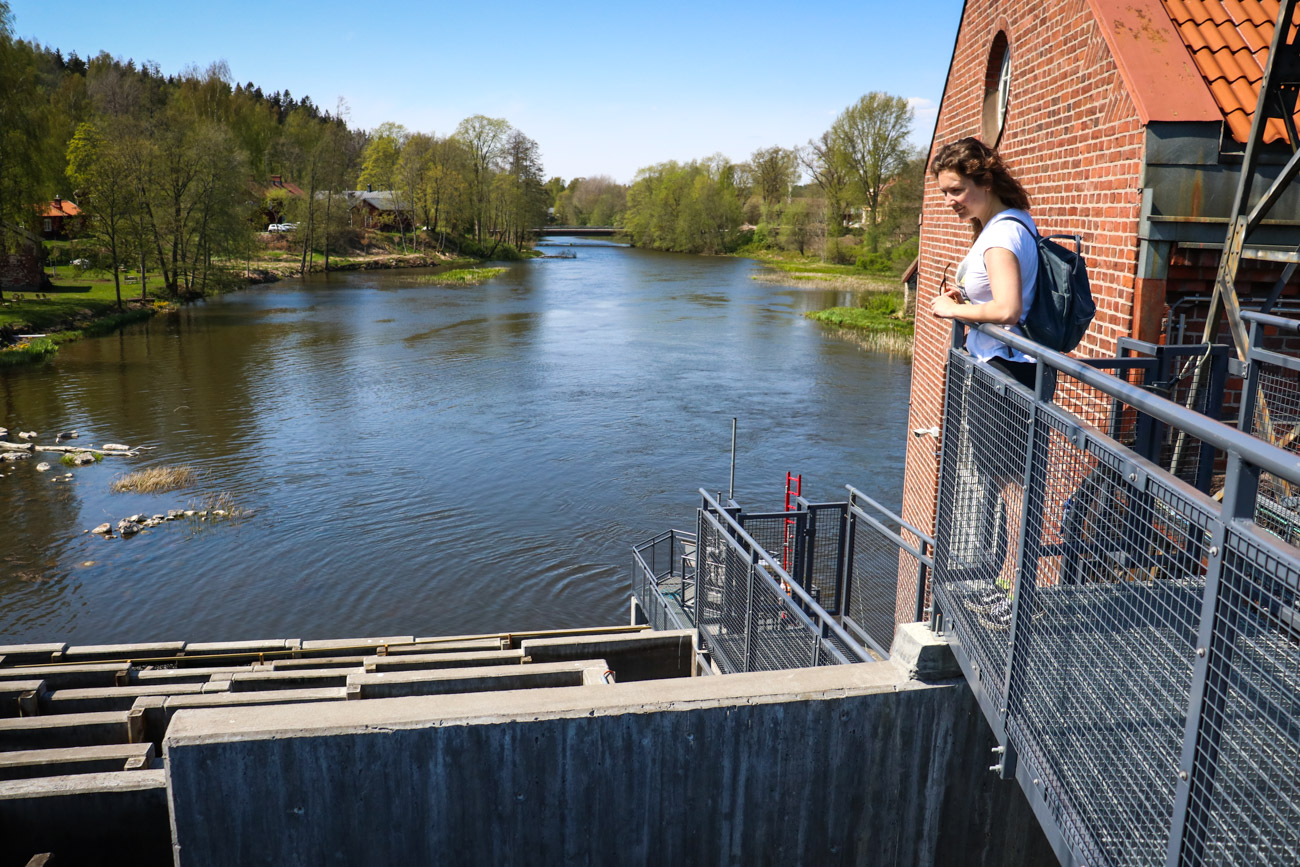
On the other side, there is a reservoir. The dam allows passage to the other side of the river, towards the town center and the restaurant area. However, we don’t jump back there now. After exploring the scenery around the dam sufficiently, we return to the same shore where we started and continue towards the pedestrian bridge. As we walk, we find a small and narrow pathway hidden behind the buildings, almost feeling like a secret, shaded passage. We pause for a moment to admire the ferns and enjoy the coolness of the shade.
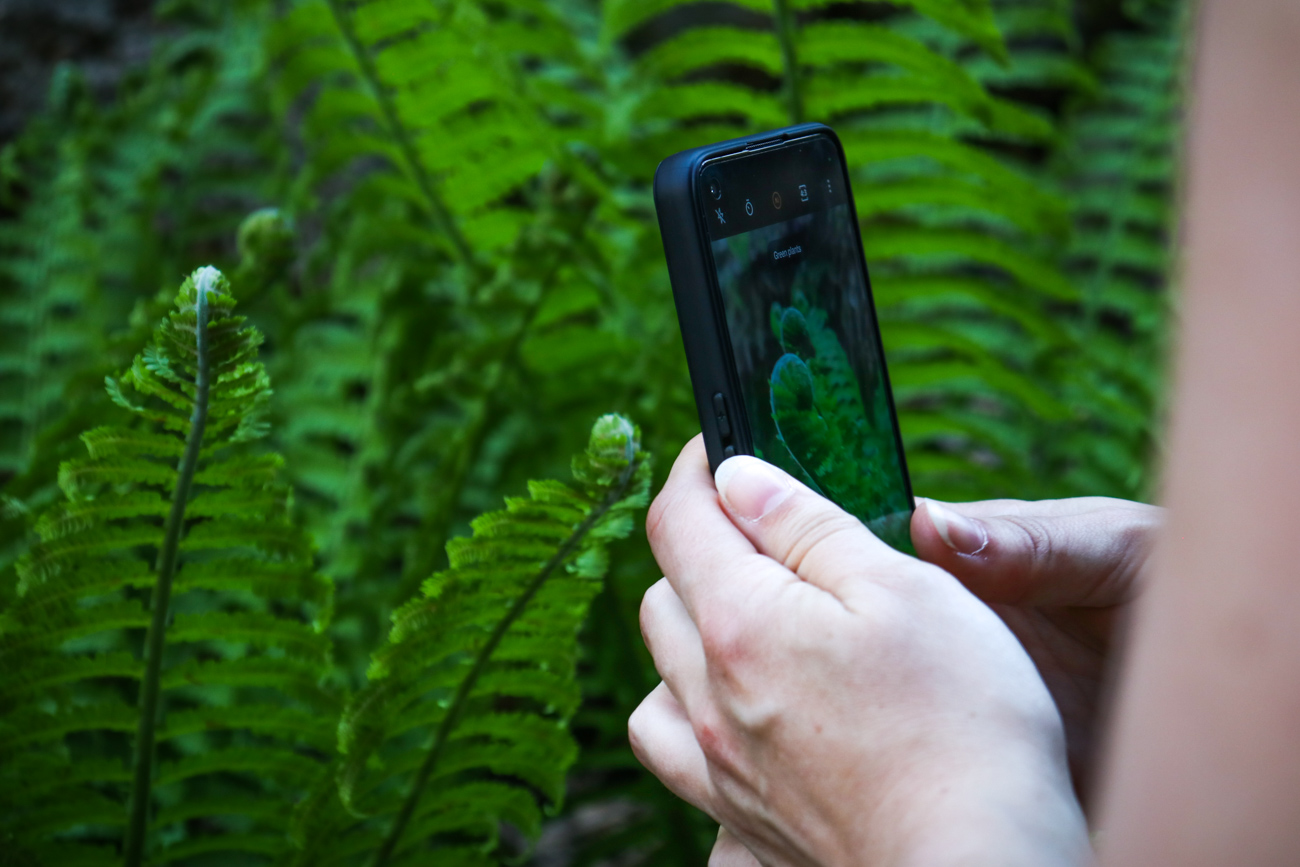
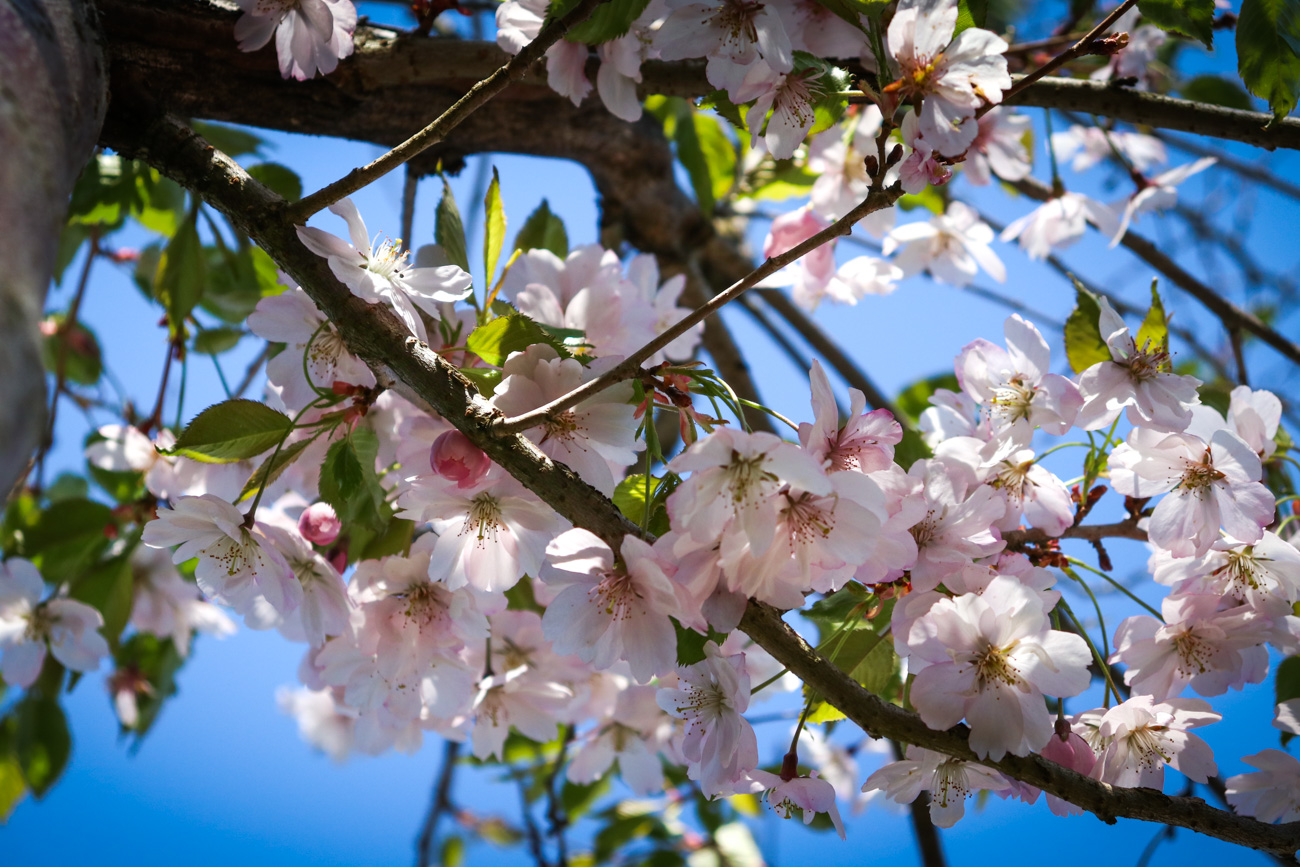
The pedestrian bridge leads us once again across the river and back to Åvallen area. We return to Pumpviken park the same way we came. My eyes catch sight of a tulip bed gleaming in beautiful colors, which I somehow missed on the way there. In my opinion, the most representative views of Pumpviken are seen in this direction, near the Pumpputalo building.
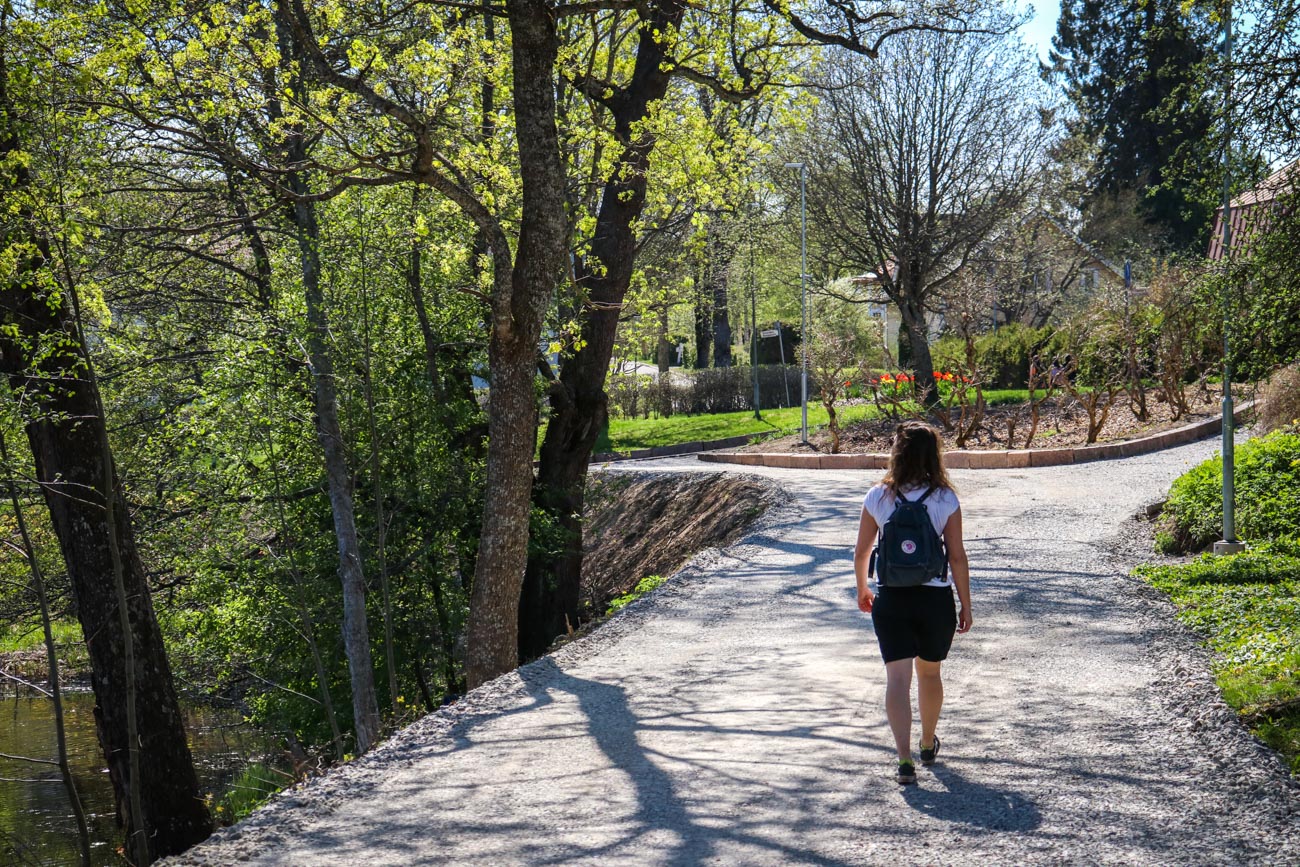
Upon returning to our car, we unknowingly miss a highly interesting monument just short distance further along the riverbank. In the area near the Turuntie bridge, there is a memorial from the Great Northern War. Visit Raseborg website provides the following information about the place and the battle that took place in 1713:
“The Landsbro Monument was built as a memorial of the battle which was fought on that place during the Great War on August 22nd 1713 between the Swedish King Karl XII’s and the Russian Tsar Peter Ist’s troops. During that time the Russians took over eastern and central Uusimaa region. To defend the passage to nation’s former capital Turku, Colonel Johan Stiernschantz took position with 500 men and 200 cavalrymen at the ford in Landsbro. The Russians came with 13 800 men and attacked the Swedish by a retentive at Svartå River.”
Visit Raseborg
Well well, we must definitely make a third trip there soon! The forces of King Charles XII of Sweden, also known as Carolus Rex in Latin, who rose to power in his teenage years, were precisely in that area where we wandered, enjoying the warmth of the spring day and the beauty of the place, without a care in the world. Don’t make the same mistake as us; make sure to find the memorial – here’s a map link.

See also
Ekenäs’ serenity and autumn colours are fit for a postcard – only one hour from Helsinki





Leave a Reply
Want to join the discussion?Feel free to contribute!